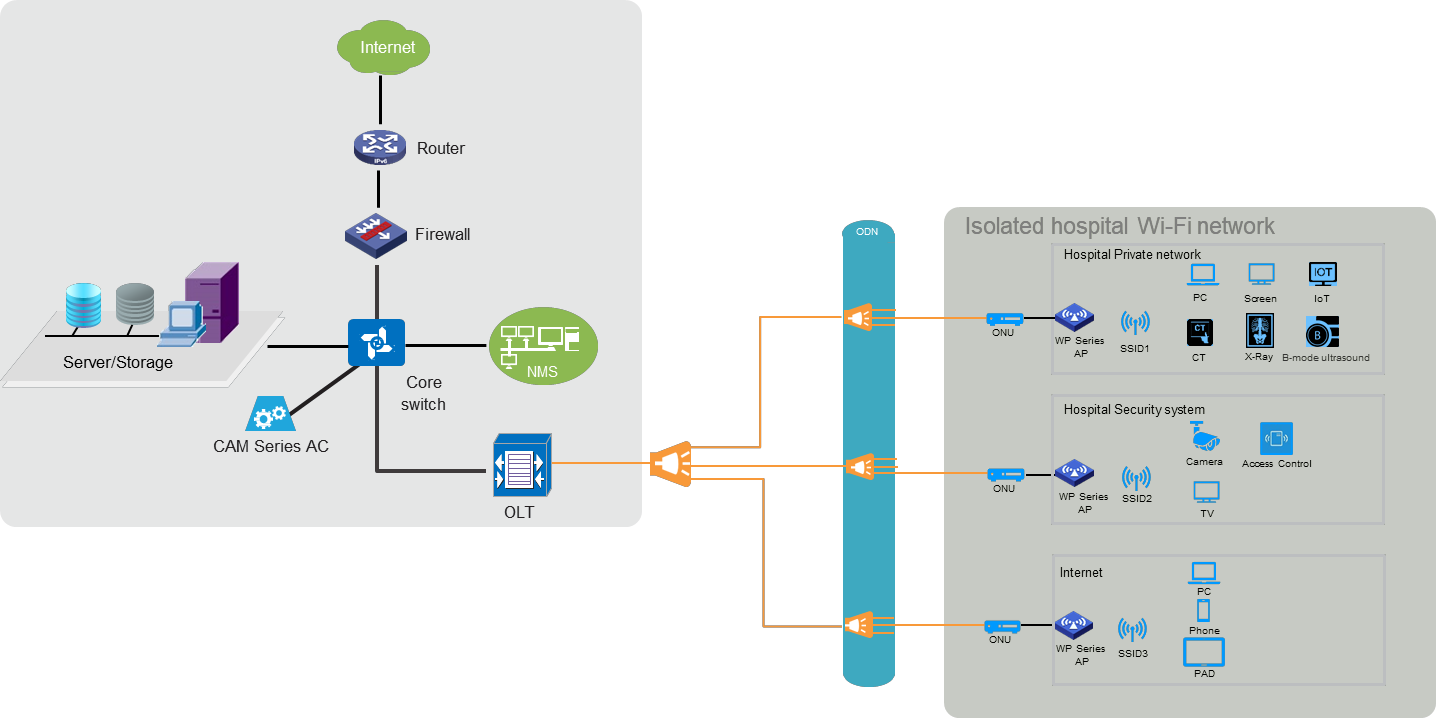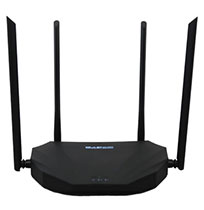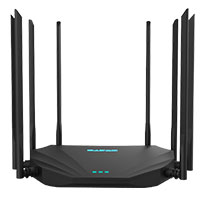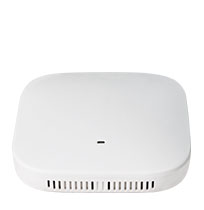As the clinic has become informationalized, the healthcare Wi-Fi solutions for hospital clinics are significate and necessary for vital sign data collection, medical care data query, and entry, call communication, etc., to make full use of the medical information system and play the advantage of digital hospital technology. Hospital wireless network design for healthcare and clinics can also improve patients' satisfaction with hospital services.
1. The wireless network needs to connect medical equipment and business systems
2. Medical equipment and business terminals need to roam seamlessly in the wireless network
3. The wireless network must not interfere with medical equipment and the radiation must be within the range of human health radiation
4. The wireless network requires users to actively push the hospital business process guidance page
5. Wireless networks need to physically or logically separate wireless networks for different purposes
6. Wireless network security protection and behavior control
The wireless network solution for hospitals launched by Ceres can meet the needs of the above hospitals for wireless networks. The wireless Hospital solution topology diagram of Ceres is as follows:
AC: Responsible for the unified management of all APs, including AP plug and play, channel intelligent switching, automatic power adjustment, load balancing, fast roaming, device connection, and user connection. Support WI-FI network automatic operation and maintenance, intelligent probe function. Support TLS/DTLS network security protocol. Support detection of Rouge AP and Rouge Station. Support Mac and portal hybrid authentication and Access audit. Support
Access Network: It consists of OLT, POE ONU, and Optical Splitter. It is responsible for transmitting management traffic and service traffic to the AC.
AP: The wireless physical access layer, where all APs share a single or multiple SSIDs, which can implement load balancing and roaming of wireless network traffic. Support probe function.
The Demand for Medical-grade Wireless Network and Healthcare Wi-Fi Solutions
The mobility and flexibility of medical grade wireless networks make it possible for hospitals to deploy special information application systems. The medical grade wireless network helps hospitals and other medical institutions to achieve a high degree of sharing and effective use of medical equipment and information. However, due to a large number of departments, high population density, and many mobile terminals in hospitals, hospital networking often has the following challenges:
Compared with wired networks, how to ensure continuous and stable signal and no blind spot coverage for the medical-grade wireless network.
There are many types of terminals, and it is often necessary to roam in various departments, and the perception accuracy needs to be improved
If the patient's medical records and doctor's treatment plan are leaked, it will cause unpredictable consequences. Hospital networking security is very important.
There are many co-channel signals, causing serious interference. In addition, it is necessary to adjust the wireless transmission power to avoid interference with medical equipment.
An intelligent management system is needed to avoid hospital Wi-Fi failure.
Special Functions of Hospital Wireless Network Design
1. Anti-interference design of hospital wireless network
Interference from outside the WLAN network is also divided into WLAN interference and non-WLAN interference. WLAN interference mainly includes Rogue devices, neighboring WLAN networks, Adhoc networks, etc. WLAN works in the ISM frequency band. In addition to WLAN devices, there are many non-WLAN devices that also work in this frequency band, such as microwave ovens, cordless phones, Bluetooth devices, wireless cameras, outdoor microwave links, wireless game controllers, Zigbee, WiMax, etc. Non-WLAN interference sources can interfere with WLAN signals, causing WLAN signals to not be received correctly. There are also some devices on the non-ISM frequency band that will cause radio frequency signal leakage on the ISM frequency band, which can cause interference to WLAN equipment when the proximity is very close.
2. Seamless roaming design of hospital wireless network system
In the hospital wireless network, the user terminal performs wifi access by associating the SSID broadcast by the AP. During mobile roaming, the user terminal will switch the associated AP. During the switching process, the process of "cutting off the previous connection and associating the next connection" will inevitably occur, resulting in interruption of the user's Internet experience and service packet loss.
This solution adopts roaming-based handover control technology, based on the wireless controller, and adopts unified session management for all users connected to the AP. All authenticated terminals save the corresponding session in the central wireless controller, and the AP only loads and transmits user data. Therefore, no matter which AP the terminal moves to, user information and authorization quickly interact within the mobile domain under the control of the wireless controller, and seamless roaming can be achieved under the premise of effectively maintaining session integrity and reliable mobility. Finally, the terminal roaming switching time is controlled within 30ms-50ms, and the roaming switching packet loss rate is controlled below 0.5%.
3. Hospital wireless network page push design
While providing customers with free access to WLAN, it can also push the hospital’s own new products and new information publicity webpages to achieve hospital publicity and event introductions. When guests access the hospital’s wireless network, the pre-set page can automatically pop up, and the layout and content of the page can be adjusted and modified through the background. It can be replaced or updated in due course.
As one of the most professional medical grade wireless network manufacturers and suppliers in China, CERES can offer efficient healthcare wifi solutions. If you are in need, welcome to consult us for healthcare wifi solutions and CERES medical grade wireless network.














 English
English  中文
中文  français
français  Deutsch
Deutsch  Español
Español  italiano
italiano  русский
русский  português
português  العربية
العربية  tiếng việt
tiếng việt  ไทย
ไทย  română
română 
















